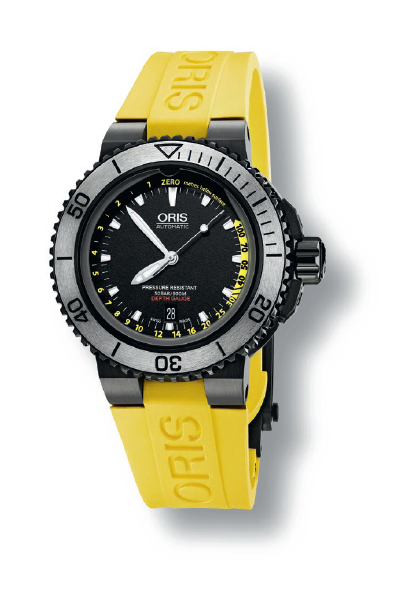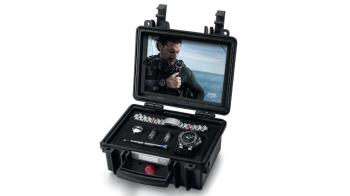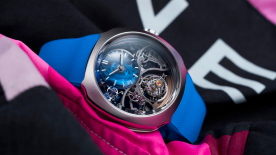Mechanical watches are often criticised for putting sophistication ahead of accuracy, unlike quartz. This is generally true, but not universally so. Sometimes, mechanical watches make forays into the realms of connected watches and other wrist-worn computers. The Oris Aquis Depth Gauge is a case in point. In January 2013, the piece set the cat among the pigeons (or more appositely, made waves) by becoming the first Oris to feature a mechanical depth gauge.
A Great- and daring - Idea
The idea was simple in principle, less so in practice; Blancpain had already had a go with its X Fathoms in 2011. Depth gauges involve calculating a pressure differential, comparing the ambient pressure to that exerted at a given moment (usually on a membrane) in real time. Aircraft altimeters use exactly the same principle, applying it to air rather than water pressure.

The specific challenge for watchmakers is that water and calibers don’t tend to go well together — anything but, in fact. Water entering the case is the one thing watchmakers want to avoid at all costs, to prevent damage to the movement and its fragile workings. Arranging for a flow of water to pass through the watch to allow a depth gauge to function was therefore an especially perilous undertaking. Here, an elegant solution was found.
Air pressure versus water pressure
In the Aquis Depth Gauge, Oris has kept the depth gauge entirely separate from the movement. The sapphire crystal has a channel installed round the outside featuring a scale that runs anti-clockwise around the dial, ending between 1 and 2 o’clock. Water enters the channel through a small aperture at 12 o’clock.

During an underwater descent, air inside the channel is compressed by the pressure of the water that has entered via this aperture. Essentially, the water ‘pushes’ the air. From there it is quite simple to arrange an indicator showing the respective pressure of each, with graduations located around the dial converting this millimetric pressure into a depth reading.
Taking up the challenge
Oris has succeeded in overcoming two major technical barriers in this model. The first is that the system must remain perfectly watertight. The depth gauge is completely isolated from the mechanical movement, ensuring there’s no risk of it being flooded: the channel and caliber never come into contact with each other. From this standpoint, the Oris depth gauge is virtually a modular complication that could be added to almost any watch model. The second achievement is that the Oris depth gauge displays measurements in real time. There’s no latency between the pressure displayed by the system and the actual depth at the time, a feature that delivers genuine added value when it comes to the decompression stops divers have to make during certain ascents.
The simple, ingenious, and effective solution used by the Depth Gauge has been installed on Oris’ flagship dive watch, the Aquis — which is certified water-resistant to 500 metres. It may therefore come as a surprise to discover that the depth gauge goes no further than 100 metres, but then again few if any people venture any deeper than that.
With a generous diameter of 46 millimetres, the piece came in a hefty case including a second steel bracelet to accompany the original rubber strap, all at a very ‘Oris’ price: CHF 3,000 on launch, throughout Switzerland. At that price, it’s a unique and unbeatable complication.
This year GMT Magazine and WorldTempus have embarked on the ambitious project of summarising the divers watch since 2000 in The Millennium Watch Book - Divers watch, a big, beautifully laid out coffee table book. This article is an extract. The Millennium Watch Book - Divers watch is available in both French and English here:





